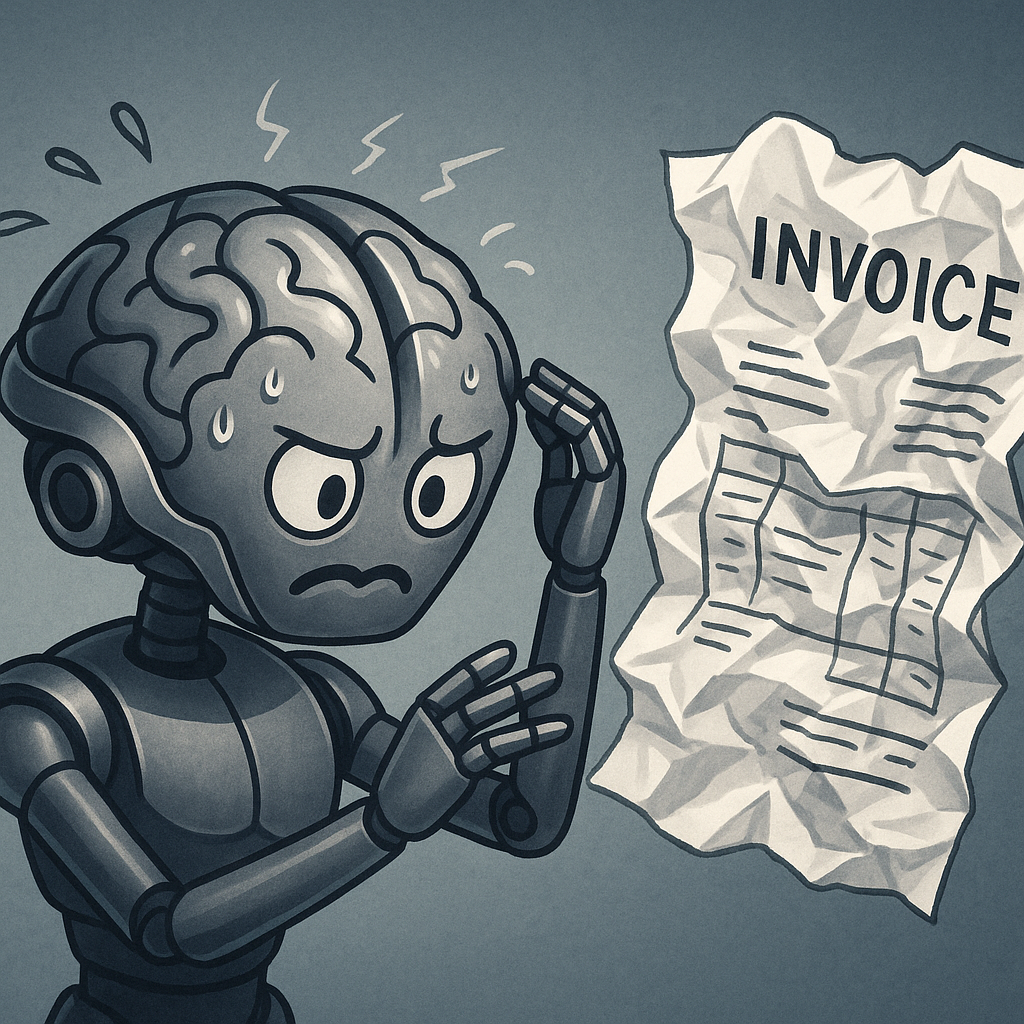
Table of Contents
Your accounts payable team is drowning in paper. The solution seems obvious: buy a state-of-the-art Intelligent Document Processing (IDP) platform to automate invoice processing. You sign the contract, implement the software, and six months later… your team is still drowning. What went wrong?
A perspective forged through years of navigating real-world enterprise integrations suggests that you likely solved the wrong problem. The issue wasn’t just manual data entry. That was merely a symptom. The real disease is a lack of standardized processes and a failure to manage supplier data effectively.
The IDP Reality Check
IDP technology is incredibly powerful, but it’s not magic. It thrives on clean, consistent, predictable data. It falters in the chaotic reality of real-world invoicing, where every supplier uses a different template, and crucial information is scribbled in the margins. Throwing AI at this chaos doesn’t eliminate the work; it just transforms it into something more demanding.
Here’s what actually happens when you deploy IDP without addressing the underlying process issues.
Your AP team’s job shifts from repetitive keying to a new, more complex set of responsibilities that require different skills entirely:
Exception Management. The IDP engine will handle 80% of the invoices perfectly. Your team will now spend 100% of its time on the remaining 20%, the problematic ones with weird layouts, poor scan quality, or missing purchase order numbers. Their role changes from processor to detective, requiring analytical skills many weren’t hired for.
Supplier Diplomacy. The most effective way to improve processing accuracy is to get cleaner data at the source. This means the AP team must become proactive partners with your suppliers, encouraging them to use a vendor portal or submit invoices in a standardized digital format. Their job becomes supplier relationship management (something that wasn’t in the original job description).
Process Optimization. With a new stream of data from the IDP platform, your team can now see which suppliers cause the most exceptions. Their job is to use this insight to address the root cause, whether it’s by retraining a supplier or fixing an internal master data issue.
The Transformation Paradox
This is the unspoken truth of digital transformation. It’s rarely about just plugging in a new tool. It’s about fundamentally redesigning the work that surrounds that tool. The technology becomes the catalyst for process change, not the complete solution.
Why do so many IDP implementations fall short? Because organizations focus on automating existing broken processes instead of fixing the processes first. They’re essentially putting a high-tech band-aid on a systemic wound.
Longitudinal data and field-tested perspectives highlight a critical insight: the companies that succeed with IDP aren’t just buying better software. They’re using the implementation as an opportunity to completely rethink their payables operation. They establish vendor onboarding standards, implement master data governance, and create exception-handling workflows that didn’t exist before.
Architecting for Success
The goal of invoice automation shouldn’t be to simply automate data extraction. The goal should be to create a truly “straight-through” process, where human intervention is the exception, not the rule. This requires thinking beyond the technology to the entire ecosystem of people, processes, and data that make automation possible.
Stop focusing on automating the keystrokes. Start architecting an intelligent, exception-driven payables process. The former is a temporary patch; the latter is a genuine competitive advantage that compounds over time.
When you frame the challenge this way, the conversation shifts from “What IDP vendor should we choose?” to “How do we create the conditions where any IDP solution can succeed?” That’s when the real transformation begins, and your AP team stops drowning and starts swimming.
To discuss architecting resilient financial processes, let’s connect on LinkedIn.